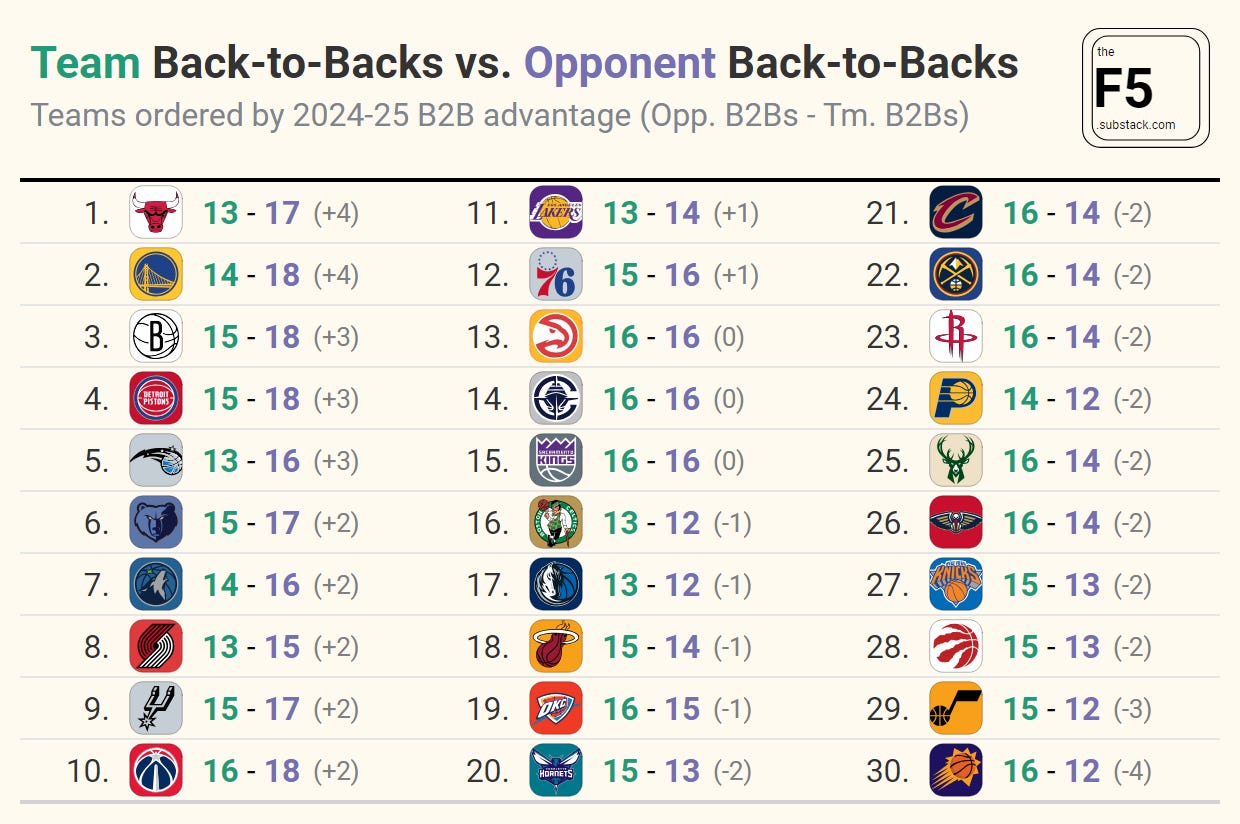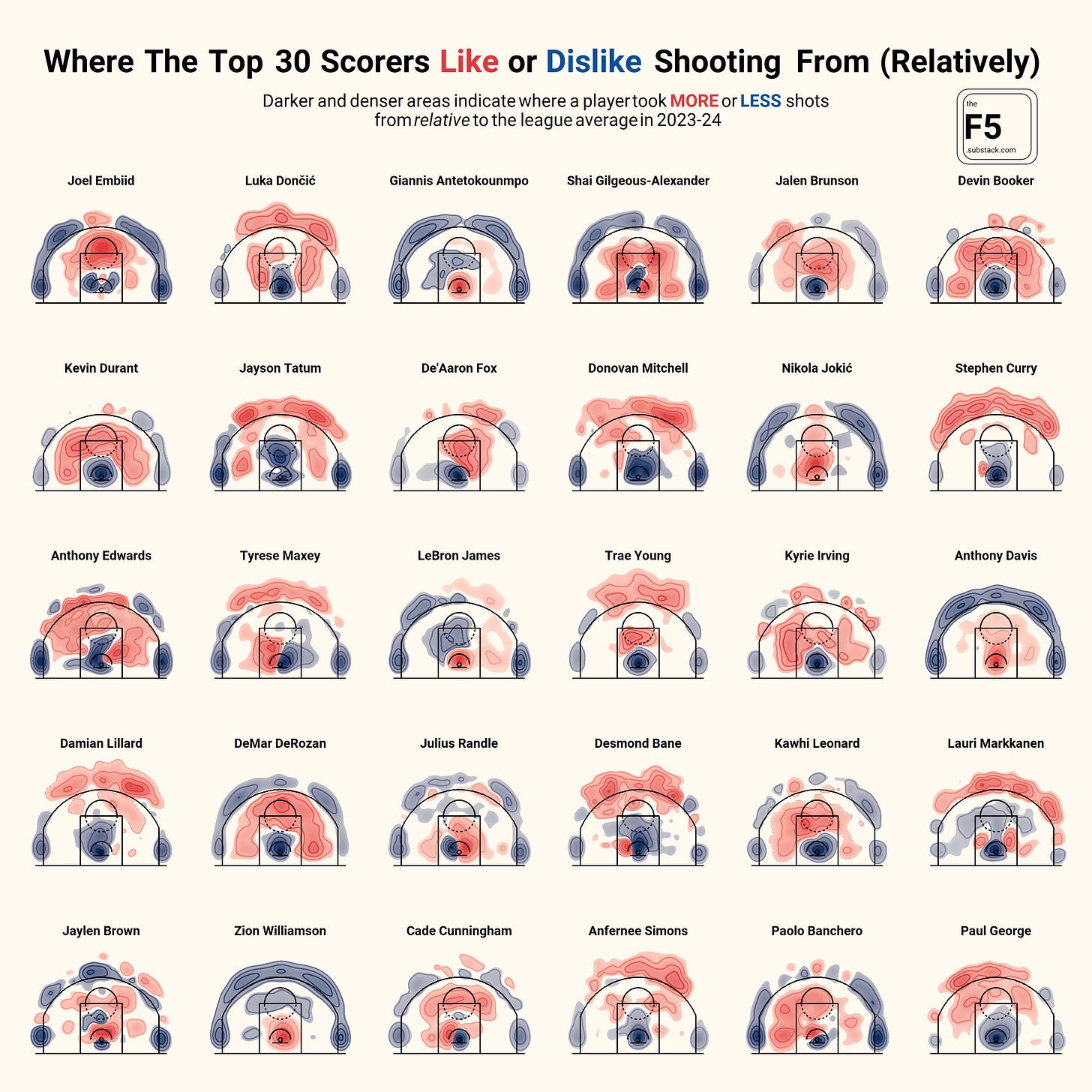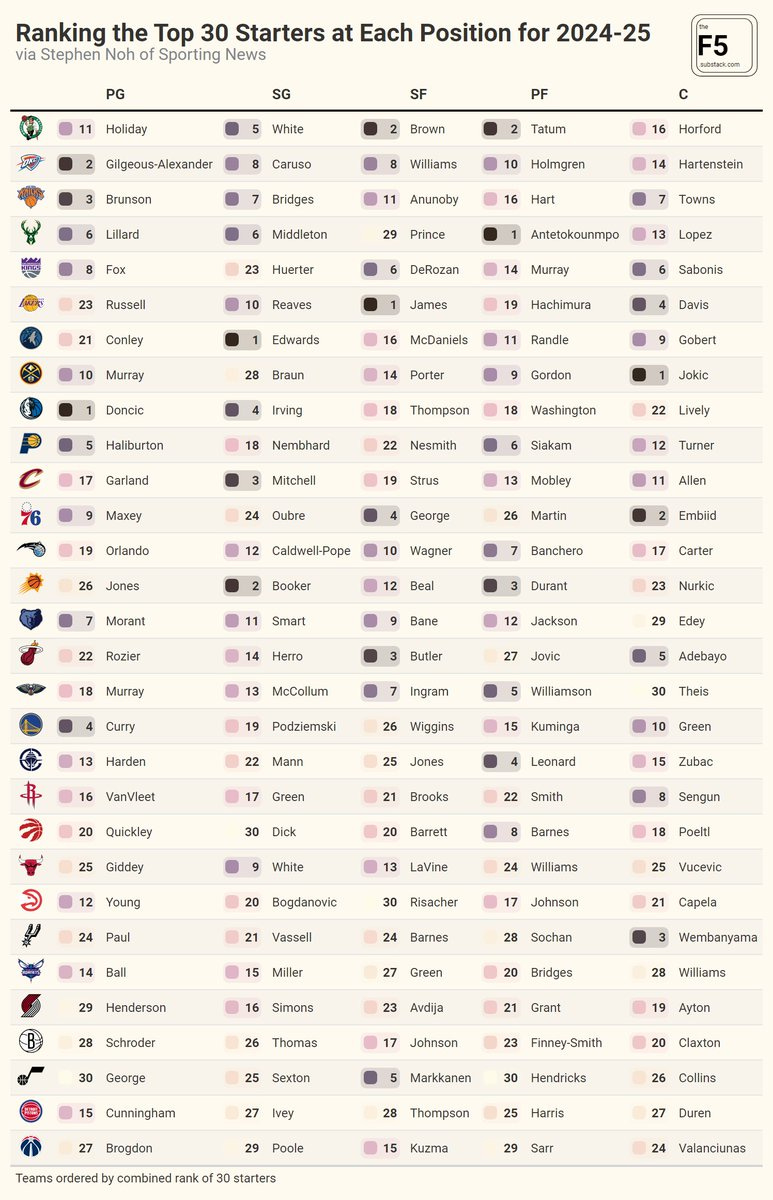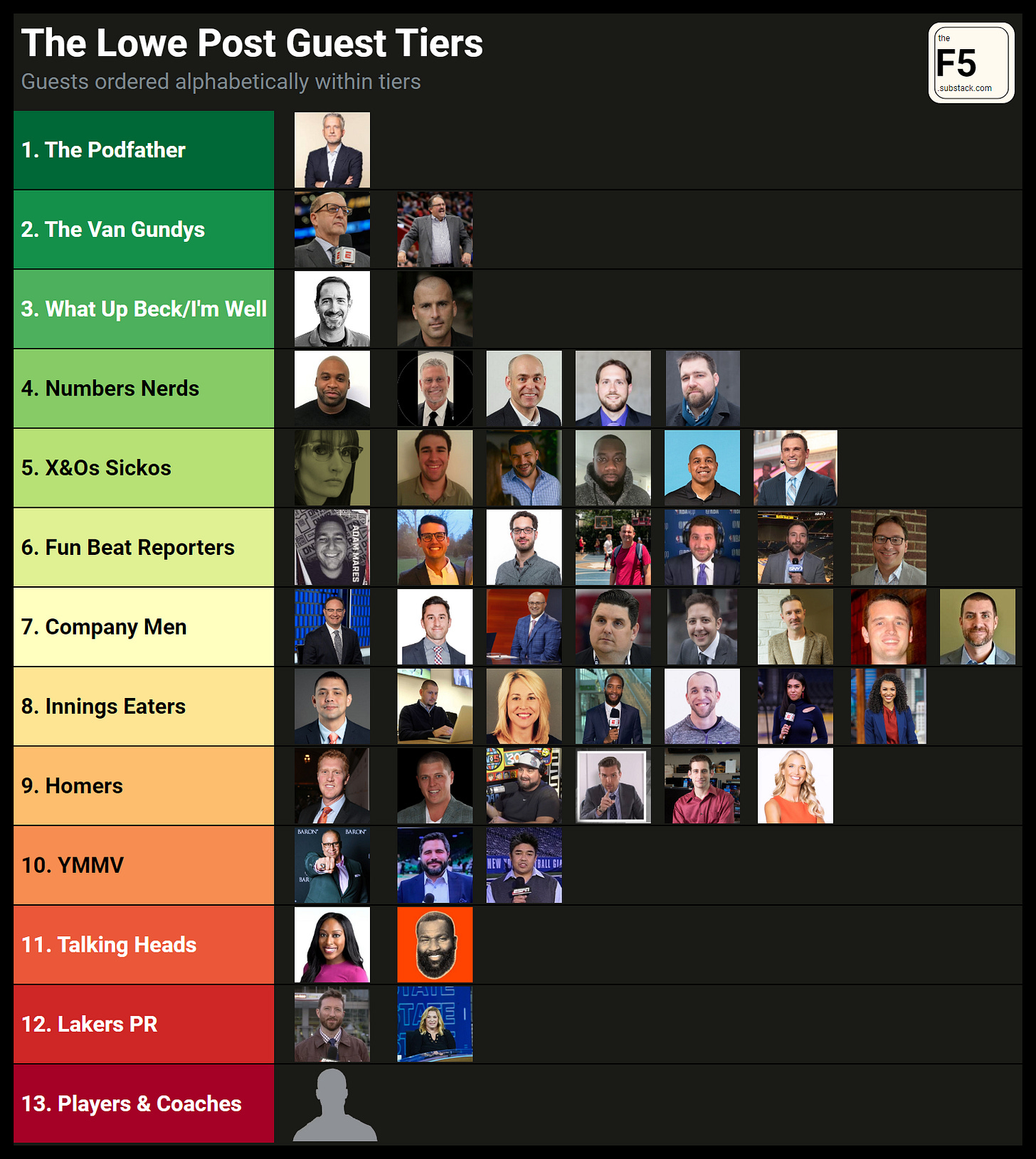I have one strong take about the upcoming season and it’s that the Suns are going to win the Western Conference. Let me explain.
Over the summer the Suns hired Mike Budenholzer to be their head coach and pluck some of the low-hanging fruit that exceeded the team’s grasp last season. After all, a team with Kevin Durant, Devin Booker, and Bradley Beal should result in something more inspiring than the league’s 10th best offense.
Budenholzer’s influence on the team is already on full display where in the preseason the Suns have attempted nearly half of their shots (48%) from beyond the arc, up from 38% in last year’s regular season.
Big whoop. It’s only preseason, you say. But contrary to popular belief, there are things a team does in the preseason that tend to carry over into the regular season. For example, a team’s shot diet in the preseason tends to be highly correlated with their shot diet in the regular season. Which is to say, I expect the Suns to bomb threes this season.
Last season, Durant and Beal each made more than 40% of their threes and Booker converted 36% of his. The problem was that the Suns trio didn’t take many threes. Their combined three-point rate in the regular season was 31%, which is how the team finished 21st in percentage of shots coming from beyond the arc.
In this year’s preseason, the Suns are 7th in three-point rate and the three stars have a combined three-point rate of 41%. It’s early, but it appears Budenholzer has gotten his stars to buy in to his system. And when the stars are bought in it trickles down to everyone else on the roster.
Take Suns rookie Ryan Dunn, for example. His biggest concern coming into the draft was not only that he couldn’t shoot threes but that he wouldn’t shoot threes. And yet, he’s taken 7.6 threes per contest in the preseason and has made nearly 40% of them.
Even their center Jusuf Nurkic is getting in on the action. A full third of Nurkic’s attempts have come from beyond the arc in the preseason. Last season, he took only 14% of his shots from three.
The reason I mention all this is because the Suns were quietly world beaters when they let it rip from beyond the arc last season. The Suns finished 21st in three-point rate last season, but in games where they had a league average three-point rate or higher they went 26-9 — good enough for a 60+ win pace.
The good news is that by hiring Budenholzer the Suns are all but assured to finish in the top half of the league in three-point attempt rate. A Coach Budenholzer led team has never finished lower than 15th in this metric and half of his teams have finished in the top five.
Outside of their main stars, the Suns also have three-point threats in Grayson Allen, Tyus Jones, and Monte Morris. I expect a team with this many plus shooters getting threes up at least at a league average rate or higher to churn out regular season wins. There’s not a bet I like better than Budenholzer for Coach of the Year.
The F5’s Top 100
I compiled the top 100 rankings from ESPN, The Ringer, HoopsHype, the Action Network, CBS, and NBA2K to create a composite ranking of the top players heading into the 2024-25 regular season.
The methodology is pretty simple — I took each player’s average rank across the six top 100s and filtered for players that appeared in at least three of the six rankings. If a player didn’t appear in a given ranking, I gave them a rank of 126 — the total number of different players that were ranked across the six different top 100s.
I’ll save you the “[PLAYER] is too high/low!!”" and leave you with one thought, which is that Nikola Jokic is (probably?) the first consensus top player in the league since LeBron James and (maybe?) only the second since Michael Jordan.
(With respect to Kobe Bryant, I don’t think there’s a season in which he was the consensus best player. Tim Duncan, Tracy McGrady, and/or LeBron were arguably just as good if not better in any given season.)
B2B
A lot of ink is spilled about how many back-to-backs a team is scheduled to have. Overall though, the league bends over backwards to distribute back-to-backs as evenly as possible.
However, the league is considerably less equitable about distributing opponent back-to-backs, which are games in which a team’s opponent is on the second half of a back-to-back.
The plot below shows the distribution of team back-to-backs vs. opponent back-to-backs. From the chart, we can see that no team has more than 16 back-to-backs and no team has fewer than 13 (spread of 4).
Meanwhile, some teams were given 18 opponent back-to-backs and some teams were only given 12 (spread of 7).
It’s an advantage to play as few back-to-backs as possible and to receive as many opponent back-to-backs as possible. So which teams lucked out and which teams got the fuzzy end of the lollipop? The chart below shows each team’s total back-to-backs vs. their total opponent back-to-backs.
The Bulls and Warriors are each +4 in this metric, while the Suns, who are tied for having the most back-to-backs and tied for having the fewest opponent back-to-backs, are -4. This is admittedly not great for my take that the Suns are going to win the West but we’re sticking to it.
ICYMI
I started posting on twitter again last month and if you don’t follow me there here are a few highlights:












